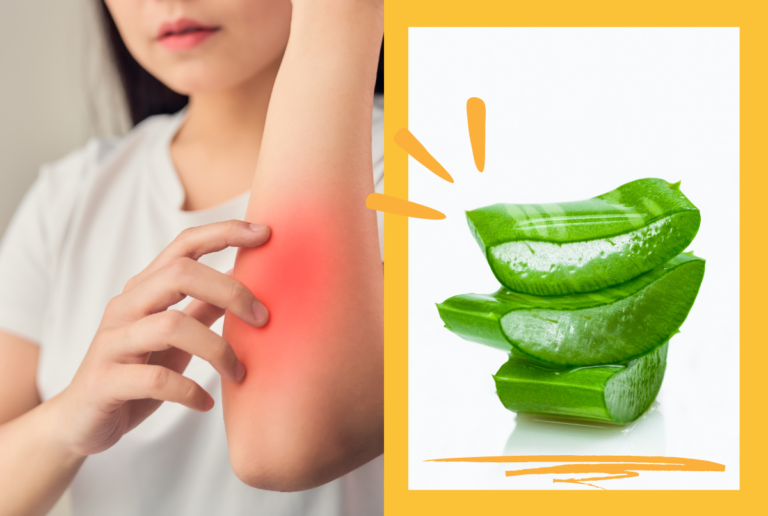Do Tanning Beds Dissolve Lip Fillers?
Do tanning beds have the power to dissolve your newly plumped lips?
It’s a hot topic for those flaunting their fresh lip enhancements and considering a session under the artificial sun.
Lip fillers, a beacon of modern cosmetic enhancement, offer a plush and voluminous look by injecting substances like hyaluronic acid into the lips. On the flip side, tanning beds promise a sun-kissed glow but come with a caveat – the potential harm from UV exposure.
The intersection of these two popular beauty choices raises an intriguing question: can the artificial rays from tanning beds compromise the integrity of lip fillers?
Well, we’ll be going over:
- What exactly goes into lip fillers and how do they work?
- How might UV exposure from tanning beds affect the longevity and appearance of lip fillers?
- Are there any protective measures or alternatives to consider for maintaining the aesthetic appeal of lip fillers in the face of UV exposure?
Let’s dive in.

Key Takeaways
- Lip fillers are a cosmetic procedure that involves injecting a substance into the lips to enhance their appearance.
- Tanning beds emit UV rays, which can damage the skin and cause premature aging, wrinkles, and skin cancer.
- While there is no evidence that tanning beds dissolve lip fillers, it is recommended to avoid them after the procedure to reduce the risk of complications and ensure optimal results.
Understanding Lip Fillers
If you are considering lip fillers, it is important to understand what they are and how they work. Lip fillers are a type of dermal filler that are injected into the lips to add volume and enhance their appearance. They are made of various materials, but the most common type of lip filler is hyaluronic acid-based.
Types of Lip Fillers
There are several types of lip fillers available, including hyaluronic acid (HA) fillers, silicone, and Radiesse. HA fillers are the most popular type of lip filler because they are natural and dissolve over time. They contain natural hyaluronic acid, which is a substance that occurs naturally in the body and helps to keep the skin hydrated and plump.
Silicone and Radiesse are other types of lip fillers that are not as commonly used. Silicone is a permanent filler that is not FDA-approved for use in the lips, and Radiesse is a filler that is made of calcium hydroxylapatite and is used to add volume to the cheeks and other areas of the face.
Lip Filler Procedure
The lip filler procedure involves injecting the filler into the lips using a small needle. Before the injection, a numbing cream or local anesthetic may be applied to the lips to minimize any discomfort. The injection process usually takes about 15-30 minutes and the results are visible immediately.
It is important to choose an experienced practitioner, such as a board-certified dermatologist or medical professional, to perform the lip filler procedure. They will be able to assess your individual needs and goals and recommend the best type of filler for you.
They will also be able to answer any questions you may have about the procedure and provide you with information on how to care for your lips after the injection.
If you are not satisfied with the results of your lip filler injection, it is possible to have the filler removed. This can be done by a dermatologist or other medical professional who has experience with lip filler removal.
Overall, lip fillers can be a safe and effective way to enhance the appearance of your lips. However, it is important to choose an experienced practitioner and to be aware of the risks and potential side effects associated with the procedure.
Drinking alcohol before or after the procedure should be avoided to minimize the risk of complications.
Effects of Tanning Beds on Lip Fillers
If you’ve recently had lip filler injections, you may be wondering if it’s safe to use tanning beds. While tanning beds may seem harmless, they can have a significant impact on your lip fillers. In this section, we’ll explore the effects of tanning beds on lip fillers.
Tanning and Hyaluronic Acid
Most lip fillers are made with hyaluronic acid, which is a natural substance found in the body. Hyaluronic acid fillers are a popular choice for lip augmentation because they’re temporary and can be dissolved if you’re not happy with the results.
However, tanning can speed up the process of dissolving lip fillers. This is because tanning beds emit UV rays that can break down hyaluronic acid, causing your lip fillers to dissolve faster than they would naturally.
Risks of Tanning After Lip Filler Injections
Tanning after lip filler injections can also increase your risk of side effects and complications. For example, tanning can cause swelling and inflammation, which can make your lips look larger than you intended.
Tanning can also cause your lip fillers to migrate to other areas of your lips, causing unevenness and lumps. In some cases, tanning can even cause the hyaluronic acid to break down too quickly, leading to permanent damage.
To avoid these risks, it’s best to avoid tanning beds for at least two weeks before and after your lip filler injections. If you do decide to use a tanning bed, be sure to wear a lip balm with SPF to protect your lips from the UV rays. You should also avoid saunas, cold sores, and corticosteroid injections for at least two weeks before and after your lip filler injections.
In conclusion, tanning beds can have a significant impact on your lip fillers. If you want to maintain the plumpness and fullness of your lips, it’s best to avoid tanning beds altogether. If you have any concerns about the effects of tanning on your lip fillers, be sure to consult with your practitioner before your next tanning session.
Managing Complications and Side Effects
Immediate Aftercare Following Lip Filler
After getting lip fillers, it is important to take care of your lips properly. You should avoid applying any pressure on the lips, such as kissing or drinking from a straw, for at least 24 hours after the procedure. You should also avoid any strenuous activities, such as exercising, for at least 24 hours.
It is recommended that you avoid exposing your lips to direct sunlight or UV rays, such as from tanning beds, for at least 48 hours after the procedure to prevent any adverse reactions.
Dealing with Adverse Reactions
Complications and side effects can occur after getting lip fillers. Some common side effects include swelling, bruising, itching, and pain. These side effects should subside within a few days after the procedure.
If you experience any severe or persistent side effects, such as burning or stinging, inflammation, or vascular occlusion, you should contact your healthcare provider immediately.
Allergic reactions to lip fillers are rare, but they can occur. If you experience any signs of an allergic reaction, such as hives, difficulty breathing, or swelling of the lips or tongue, seek immediate medical attention.
In the event that your lip fillers become lumpy or overfilled, your healthcare provider may be able to dissolve the filler with hyaluronidase. This injectable enzyme can help to break down the filler and reduce any lumps or overfilling. However, it is important to note that hyaluronidase may also cause some temporary bruising or pain.
Overall, managing complications and side effects after getting lip fillers is an important part of the aftercare process. By following the recommended aftercare guidelines and seeking medical attention if necessary, you can ensure a safe and successful lip injection procedure.
Alternatives and Preventative Measures
Non-Tanning Alternatives to Enhance Lip Fillers
If you’re concerned about the safety of lip fillers in tanning beds, there are some non-tanning alternatives that can help enhance your lips. One popular alternative is the use of lip plumping glosses, which contain ingredients like hyaluronic acid and collagen to help give your lips a fuller appearance. These glosses are easy to apply and can be found at most drugstores.
Another option is to use lip liner to define your lips and create the illusion of fullness. Choose a liner that matches the natural color of your lips and carefully apply it just outside the natural lip line. Then, fill in your lips with a matching lipstick or gloss to complete the look.
Preventative Tips Before Tanning
If you do decide to use a tanning bed with lip fillers, there are some preventative measures you can take to reduce the risk of complications. First, make sure to wait at least two weeks after getting your lip fillers before using a tanning bed. This will give your lips time to heal and reduce the risk of bruising or swelling.
It’s also important to avoid tanning if you have a cold sore or any other type of lip infection. Tanning can make these conditions worse and increase the risk of scarring. Finally, be sure to apply a lip balm with SPF to protect your lips from the sun’s harmful rays.
Remember, the most important thing is to achieve a natural look and symmetry with your lip fillers. Always consult with your doctor before getting any cosmetic procedure done and do your own research to fully understand the risks and benefits involved.
Professional Consultation and Removal Options
If you are experiencing complications or are unhappy with the results of your lip filler, it is important to consult with a medical professional. A consultation with an experienced practitioner can help you understand your options for dissolving lip filler and achieving the desired results.
When to Consult a Medical Professional
If you are experiencing complications such as unevenness, migration, or discomfort, it is important to seek medical attention. A medical professional can evaluate your condition and recommend the best course of action.
Additionally, if you are considering lip filler removal, it is important to consult with a medical professional. They can help you understand the risks and benefits of the procedure and recommend the best approach for your specific situation.
Lip Filler Dissolving Techniques
There are several techniques for dissolving lip filler. One common method is the use of hyaluronidase, an enzyme that breaks down hyaluronic acid, the main ingredient in many lip fillers. Hyaluronidase injections can be administered by a medical professional to dissolve the lip filler.
Another option for lip filler removal is surgical removal. This procedure is typically reserved for more severe cases where other methods have failed. Corticosteroid injections may also be used to reduce inflammation and swelling associated with lip filler complications.
It is important to note that lip filler removal can be costly and may not be covered by insurance. Additionally, the FDA has not approved any products specifically for dissolving lip filler, so alternative methods such as hyalase injections should be used with caution.
Overall, if you are considering lip augmentation or experiencing complications with lip filler, it is important to consult with a medical professional. They can help you understand your options for lip filler removal and recommend the best approach for your specific situation.
Frequently Asked Questions
How does heat exposure affect the longevity of lip fillers?
Heat exposure can accelerate the breakdown of lip fillers, causing them to dissolve faster than usual. This is because heat can cause the blood vessels in the skin to dilate, increasing blood flow to the area and causing the filler to break down more quickly.
Therefore, it is recommended to avoid excessive heat exposure, such as tanning beds, saunas, and hot tubs, after getting lip filler treatment.
What precautions should be taken with lip fillers before using a tanning bed?
If you have recently had lip filler treatment, it is important to avoid using a tanning bed for at least 24 hours. This is because the heat and UV radiation from the tanning bed can cause the filler to break down more quickly and may even cause it to migrate to other areas of the face.
It is also recommended to apply a broad-spectrum sunscreen with at least SPF 30 to your lips before using a tanning bed.
Is there a recommended waiting period before sunbathing post-lip filler treatment?
Yes, it is recommended to wait at least 24 hours before sunbathing after getting lip filler treatment. This is to allow the filler to settle and reduce the risk of migration or breakdown due to heat and UV radiation.
Can sunbed use accelerate the breakdown of facial fillers like Botox or Juvederm?
Yes, sunbed use can accelerate the breakdown of facial fillers like Botox or Juvederm. This is because the heat and UV radiation can cause the filler to break down more quickly, reducing its longevity.
What are the best practices for protecting lip fillers from UV exposure?
To protect lip fillers from UV exposure, it is recommended to apply a broad-spectrum sunscreen with at least SPF 30 to your lips regularly throughout the day, especially if you are spending time outdoors. Wearing a hat or using an umbrella can also provide additional protection from the sun.
Are there any specific aftercare tips to follow for lip fillers during the summer?
During the summer, it is important to protect your lips from excessive heat and sun exposure. This includes avoiding tanning beds and limiting your time in direct sunlight. It is also recommended to apply a broad-spectrum sunscreen with at least SPF 30 to your lips regularly throughout the day and to stay hydrated by drinking plenty of water.
If you experience any unusual swelling or discomfort, contact your healthcare provider immediately.






